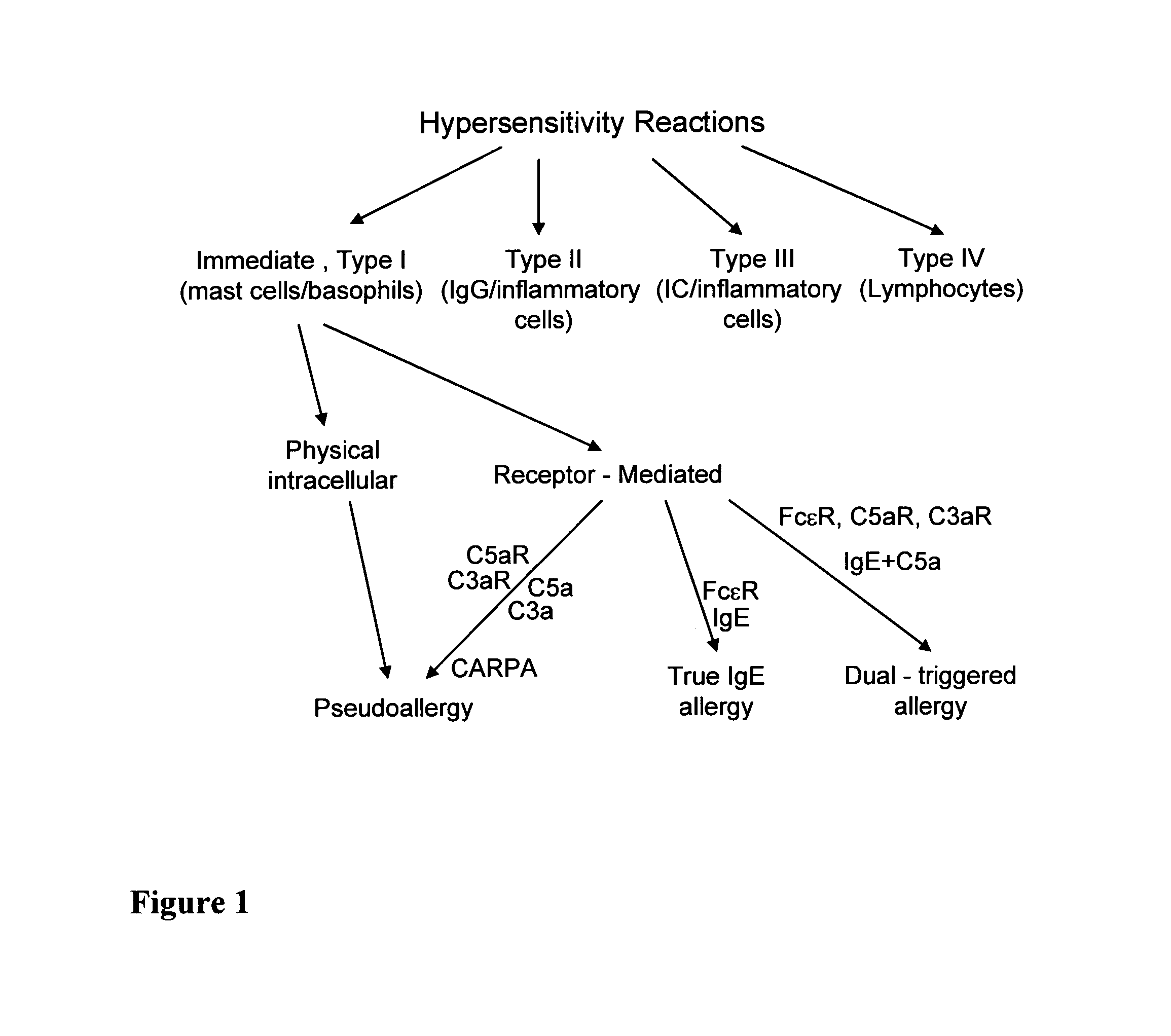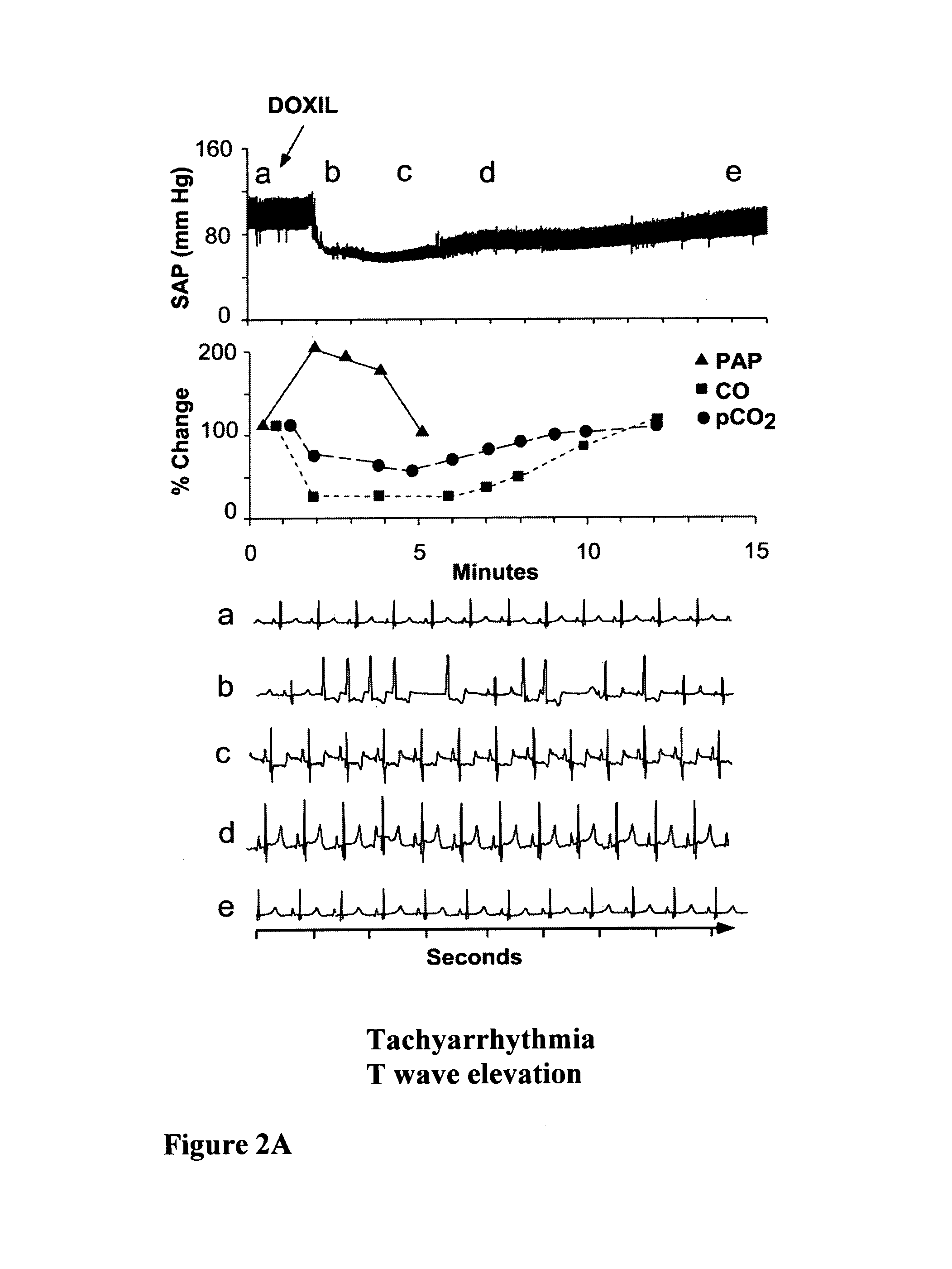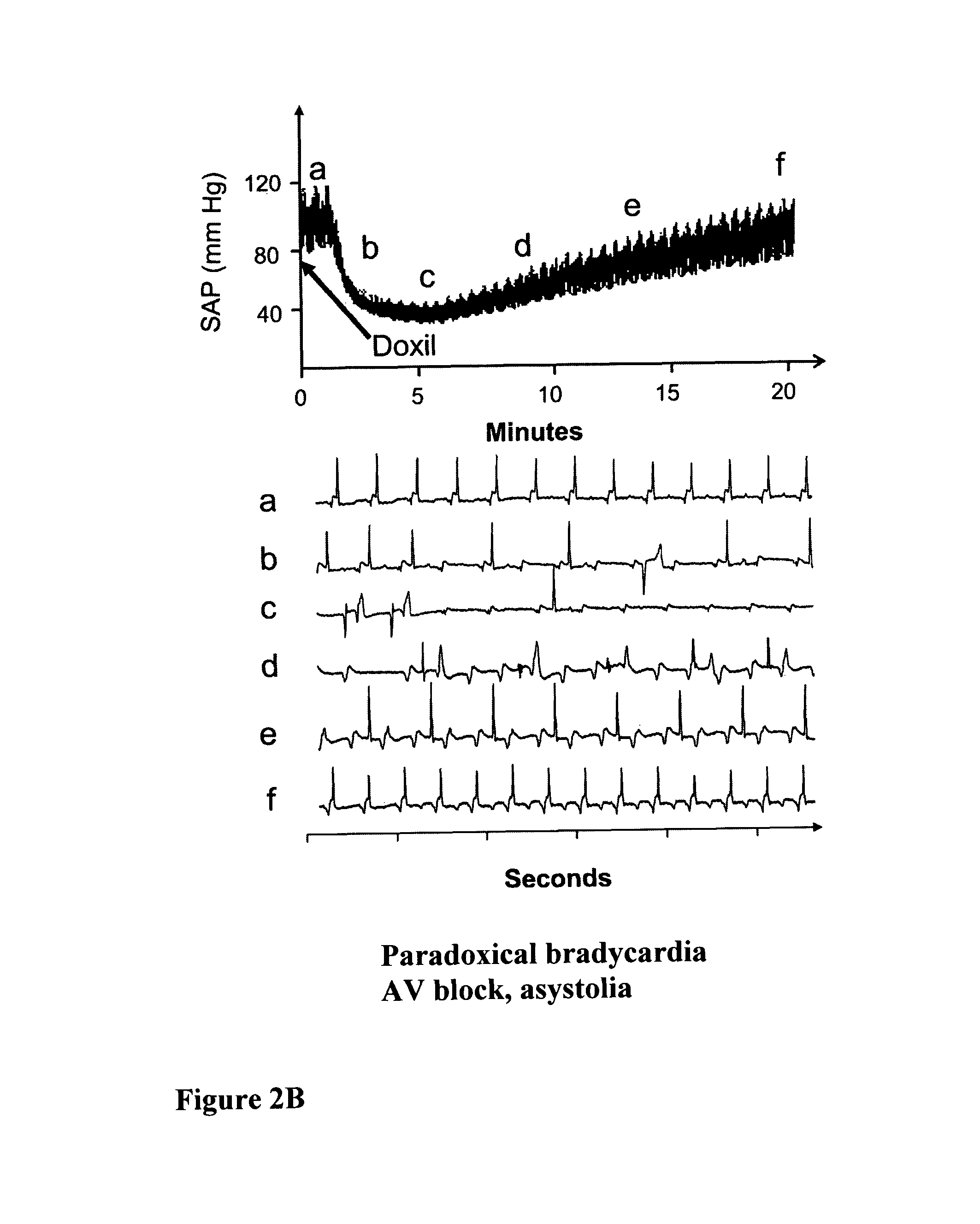Particulate drug carriers as desensitizing agents
a technology of desensitization agent and drug carrier, which is applied in the direction of drug composition, immunological disorders, biocide, etc., can solve the problems that the symptoms cannot be explained by the classic ige paradigm, cannot be diagnosed or predicted by conventional in vivo, liposome or lipid-based drugs, and may be uniqu
- Summary
- Abstract
- Description
- Claims
- Application Information
AI Technical Summary
Benefits of technology
Problems solved by technology
Method used
Image
Examples
example 1
A Model for Testing Liposomal C Activation-Related Pseudoallergy
[0100]The desensitization process resulted from the pretreatment with drug-free vehicle is demonstrated using the porcine model of liposomal C activation-related pseudoallergy (CARPA), and ELISA measurements of SC5b-9 (the terminal complement complex of C5b through C9 containing the serum S-protein) in human serum. The porcine model provides a particularly useful model to study liposome reactions, as practically all pigs develop major cardiopulmonary distress following intravenous injection of minute amounts (5-10 mg) of liposomes, corresponding to the sensitivity of those 2-7% of humans who develop severe hypersensitivity reactions to liposomal drugs (Szebeni et al., 2000a; Szebeni et al., 2007; Szebeni et al., 2002; Szebeni et al., 1999). The manifestations of the reaction, demonstrated in FIG. 2, include a rise of pulmonary arterial pressure (PAP), fall of cardiac output (CO) and pCO2 in exhaled breath and rise or fa...
example 2
Tolerance Induction for DOXIL™ Associated Hypersensitivity Reactions by Repetitive Administration of the Drug
[0103]DOXIL™ was obtained from the pharmacy of Semmelweis University, and contained doxorubicin HCl (2 mg / mL, 4.22 mM), HSPC (9.58 mg / mL), Chol (3.19 mg / mL), N-Carbamyl-poly(ethylene glycol methyl ether)-1,2-distearoyl-sn-glycerol-3-phospho-ethanol-amine triethyl ammonium salt with a polyethylene glycol (PEG) moiety of 2000 Da (2K-PEG-DSPE), 3.19 mg / mL), ammonium sulfate, mg / mL; 10 mM histidine (pH 6.5) and 10% sucrose. Dalant Mangalica pigs of both genders, weighing in the range of 21-30 kg, were sedated by intramuscular (i.m.) administration of ketamine, followed by intravenous (i.v.) administration of xylasine / ketamine-HCl (Calypsol) and Nembutal via the ear vein. Fluid (Salsol A or Ringer) supply maintaining circulatory stability was also provided via the ear vein. Ventilation was assisted by a Harvard ventilator (Harvard Apparatus, Cambridge, Mass.). Surgery was performe...
example 3
Prevention of Hypersensitivity Reaction to DOXIL™ by Prior Administration of Placebo Liposomes (Doxebo)
[0107]The experiment presented in this example shows that drug-free, DOXIL™-equivalent liposomes called herein placebo DOXIL™, or Doxebo, were similar to DOXIL™ in terms of desensitization of pigs for further DOXIL™ reactions. The preparation of Doxebo was performed as described below, such that its physicochemical properties are essentially comparable to those of DOXIL™. Doxebo was consequently tested for its tolerizing effect in experiments similar to those described in Example 2. The lipid components of DOXIL™ were also used to prepare Doxebo, namely HSPC from Lipoid Inc., Ludwigshafen, Germany (purity ≧97%). 2K-PEG-DSPE either from Lipoid or from Genzyme, Liestal, Switzerland and cholesterol from Sigma. HSPG, used in some control experiments instead of 2K-PEG-DSPE, was from Lipoid Inc. The lipids were mixed in ethanol at 65° C. to a final mole ratio of 52.8:4.5:42.7, respective...
PUM
| Property | Measurement | Unit |
|---|---|---|
| molecular weight | aaaaa | aaaaa |
| size | aaaaa | aaaaa |
| mean diameter | aaaaa | aaaaa |
Abstract
Description
Claims
Application Information
 Login to View More
Login to View More - R&D
- Intellectual Property
- Life Sciences
- Materials
- Tech Scout
- Unparalleled Data Quality
- Higher Quality Content
- 60% Fewer Hallucinations
Browse by: Latest US Patents, China's latest patents, Technical Efficacy Thesaurus, Application Domain, Technology Topic, Popular Technical Reports.
© 2025 PatSnap. All rights reserved.Legal|Privacy policy|Modern Slavery Act Transparency Statement|Sitemap|About US| Contact US: help@patsnap.com



